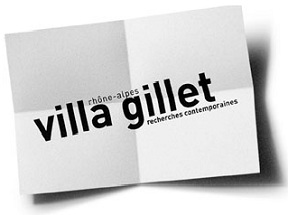Reclaiming the streets, Public space and quality of life in New York
https://video.ens-lyon.fr/eduscol-cdl/2012/ANG_2012_jkhan.mp4
Commissioner of the NYC Department of Transportation,
interviewed by Clifford Armion
13th October 2012, The Guardian New York Offices
I’m Janette Sadik-Khan, I am the Commissioner of the New York City Department of Transportation. We are responsible for the 6000 miles of streets in New York City, the 787 bridges in New York City and for the Staten Island Ferry which carries 22 000 000 passengers a year. More than that, we’re responsible for the quality of life and economic development of the city. For too long we’ve looked at our streets as just ways to get from point A to point B in a car as fast as possible and that’s really not the way we should be looking at the most valuable real estate that we’ve got in New York. As Mayor Bloomberg likes to say, ‘streets are for people.’ We have two thirds of New Yorkers get around by other means than the car. They get around by walking, they get around by the bus, they get around by taking the subway, they get around by cycling. For fifty years we engineered our streets just for the cars and not for anybody else. We’re really working hard to bring some balance to our streets and to improve the quality of life for everyone. It’s not only an aesthetic proposition but it is an economic development strategy. People can move anywhere, they want to be in a place where they feel safe raising a family, safe walking around and we’re designing streets for the people that come and visit and play and live here. It is extraordinarily important that we provide the kind of mobility that people need to get around, particularly in the 21st century.
One of the pledges of Michael Bloomberg when he was elected was to make New York a greener city. How do you contribute to that?
Mayor Bloomberg’s PlaNYC initiative was a thirty year plan to say ‘what do we need to do to ensure that a 9.4 million New York City works better than an 8.4 million New York City works today?’ so that when you open the door in the year 2030 you like what you see. That long term planning view, understanding the growth that’s going to happen, meant that we needed to change some fundamental things. One of the first things we needed to do was to look at our transport systems differently and use the lever of growth to modernise those transport systems. That meant investing in public transport, investing in our subway system – we built a new subway line, the 7 line, with the new economic development plan for the Far West Side – it meant engineering our streets differently for buses. We’ve got the largest bus fleet in North America and they’ve got the slowest bus speeds. Buses were really the second class of our transport network, which was not effective. So we rolled out the red carpet for buses and dedicated lanes and cameras: people get tickets when they get into the bus lanes. Now they’re moving faster and they’re more popular than ever. We’ve also built 285 miles of on-street bikelanes right out of the box, to make it safe for people to cycle because it shouldn’t be a sport for just the brave. I’m always happy when I see kids and families in bikelanes because it really shows these are safe bikelanes and a safe system. Looking to building sustainable transport options, a menu of safe, available, high quality options for people to get around: that is a really important part of the work that PlaNYC directs with the Department of Transportation.
Are you involved in educational programs?
Yes we are. It’s a very important program and it’s a very important question. Some of our most vulnerable pedestrians are kids and so we have a ‘safe routes to schools’ program where we are engineering safe streets around all the public schools. We are also doing a tremendous amount of work in classrooms. We’re both teaching kids about safe ways to cross the streets and also involving them in the engineering and design work. We go to schools and kids, as part of the curriculum, design their own traffic signs. Then we produce them and we put them up in their schools. We work with schools and document speeding: the kids operate the speed cameras and document the speed of the cars. This actually ties to the physics and the maths and the science curriculum as well. So it’s an integrated program. It’s been interesting because I’ve had parents come up to me to say that kids are almost impossible to take around in a car now because they’re constantly saying ‘you’re going over the speed limit, you’re going over the speed limit!’ Speeding is a big problem in New York City. It’s responsible for a quarter of pedestrian and traffic fatalities in the city. If you’re hit by a car going forty miles an hour there’s a 70% chance you’ll die. If you’re hit by a car going 30 miles an hour, there’s an 80% chance you’ll live. That message really resonates for kids and it’s become a really effective part of our program. We’re working very hard on all these safety education fronts.
What projects are you working on right now?
We continue to work with communities to find the right balance and tailor projects to meet their needs. The next big project for New York is the Bike-Share Program. We’ll be unveiling that in March and that will mean 10 000 bikes and 600 stations, that’s a very exciting program. It’s fast, it’s inexpensive, it’s the best way to get around town. We also have fifty plazas that we are working on across the city, bringing them to communities in every neighbourhood. It’s been a terrific ten year under Mayor Bloomberg’s leadership. We realised that we needed to do much more to invest in safe sustainable mobility options for New Yorkers and Mayor Bloomberg’s charge as part of PlaNYC was to ensure all New Yorkers were within a ten minute walk of a quality open green space. We’re on track to get that done. I can’t say how wonderful it has been to work with such an innovative and passionate leader; I wish every city had the opportunity to work with someone like Mayor Bloomberg.
Cette ressource a été publiée dans le cadre de la quatrième saison du festival "Walls and Bridges", organisé par la Villa Gillet, qui s'est tenu à New York du 11 au 20 octobre 2012.
Pour citer cette ressource :
Janette Sadik-Khan, Clifford Armion, Reclaiming the streets, Public space and quality of life in New York, La Clé des Langues [en ligne], Lyon, ENS de LYON/DGESCO (ISSN 2107-7029), janvier 2013. Consulté le 28/11/2025. URL: https://cle.ens-lyon.fr/anglais/civilisation/domaine-americain/immigration-et-minorites/reclaiming-the-streets-public-space-and-quality-of-life-in-new-york



 Activer le mode zen
Activer le mode zen

